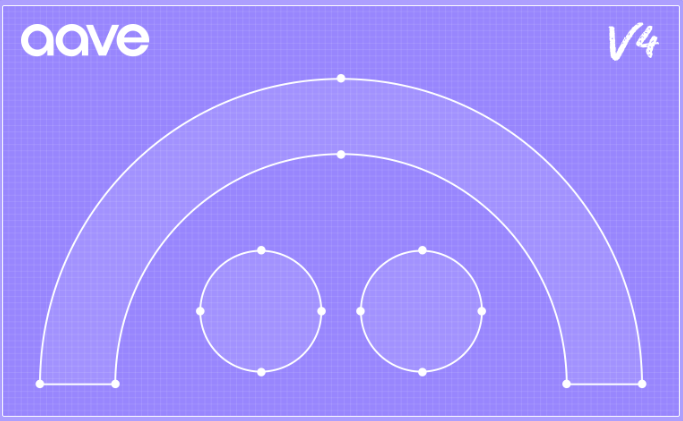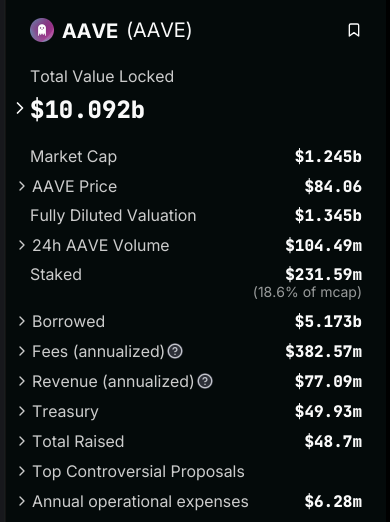One of the largest decentralized finance (DeFi) protocols, Aave, has unveiled an updated roadmap. A large-scale upgrade of the ecosystem is planned for mid-2025. Meanwhile, Aave’s roadmap includes the launch of version 4 of the protocol, a new interface, and expanded DeFi capabilities.
New version of Aave
Aave V4 will be built on a new architecture with a single liquidity layer.However, the latter will create a centralized system to manage all asset and lending transactions on the platform, expanding on Aave V3’s “portals” concept. Thanks to this innovation, the decentralized autonomous organization (DAO) Aave will be able to add new lending modules or remove obsolete ones in the future. At the same time, it will not have to move or migrate existing liquidity. 
The remaining features of Aave V4 include:
–Fully automated interest rates that will adapt to changes in the market. To do this, the protocol will start using Chainlink data oracles.
–Liquidity premiums: They will allow for more precise risk management and increase the protocol’s capital efficiency by offering lower rates to borrowers with strong collateral.
What changes await the stablecoin GHO?

The updated Aave roadmap also offers several new features for GHO integration with Aave V4. They are expected to improve the user experience and increase profitability for algorithmic stablecoin providers. However, the GHO stablecoin was launched in July 2023. It is backed by Ethereum (ETH) and relies on the Ethereum Facilitator smart contract system, which allows collateral and loans to be issued in GHO. At the time of writing, the asset’s capitalization is $50.9 million, according to CoinGecko.
As part of Aave’s rollback to V4, the project’s stablecoin expects the following:
-A “softer” liquidation mechanism: It will operate through an automated market maker (AMM). Meanwhile, this will simplify the process of liquidating GHO positions by allowing users to choose which collateral to liquidate and which to buy back.
-Interest paid in stablecoin: Liquidity providers will be able to choose the option of receiving interest payments in GHO instead of the initially deposited “stable” coin. In addition, Interest from borrowers is converted into a Protocol Controlled Value (PCV), which directly backs the issued GHO.
-Emergency repayment mechanism: It will be activated in cases of serious and prolonged deviation of the GHO rate from parity and will allow the collateral with the lowest health coefficient to be gradually repaid.
-Optimization of gas costs: With the new architecture and removal of legacy features, transaction costs are expected to be reduced by 30-50%.

For now, the proposal to update Aave to V4 is in the “temperature check” stage, which reflects the sentiment of the community. Also, only after this stage will the initiative move to the voting stage. However, Aave is currently the third largest DeFi protocol in the crypto market. Moreover, according to DefiLlama, its total locked value (TVL) is estimated at $10 billion.












